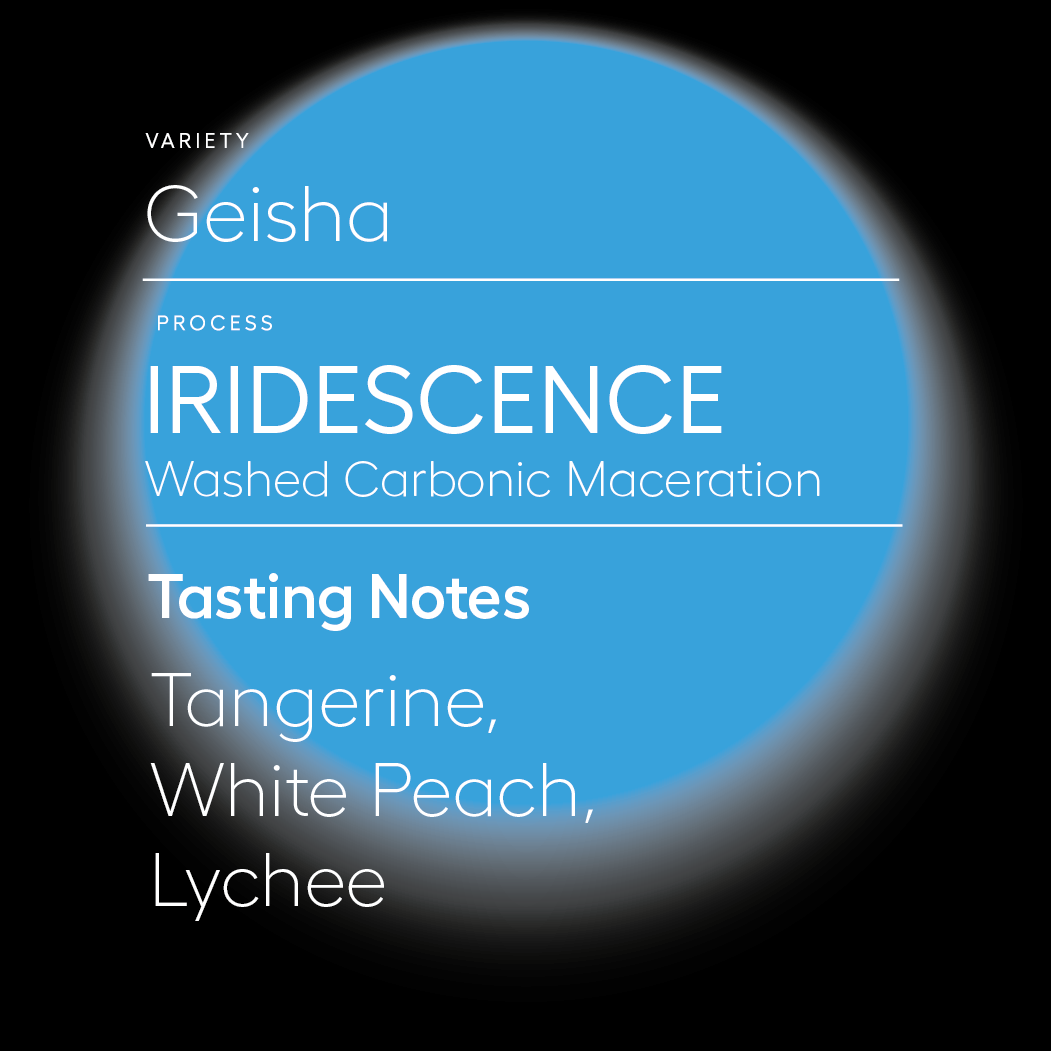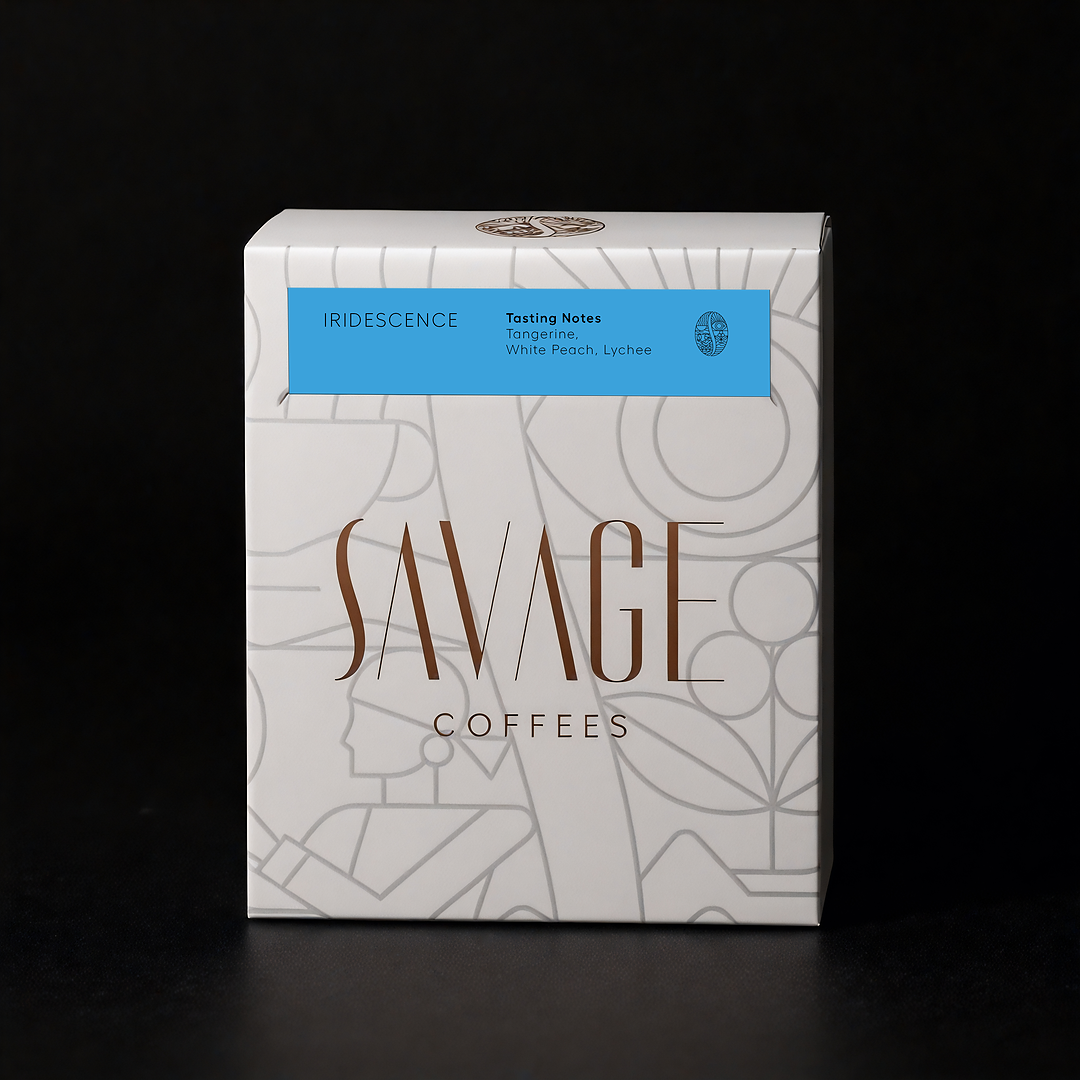

Iridescence | Geisha
Pickup available at St Petersburg
Usually ready in 24 hours

Iridescence | Geisha
100g
St Petersburg
2756 25th St N
St. Petersburg FL 33713
United States
Partner Producer Program
Savage Coffees has created the Producer Partnership Program (PPP).
Our program elevates the fruits of our fellow Producers through advanced processing techniques pioneered by Jamison. These multi-farm coffees showcase variety and terroir while celebrating trust through cooperation.
Process
Iridescence is a washed carbonic macerated Geisha grown in lush, volcanic, rainforest highlands. This anaerobic process was first pioneered by Jamison Savage in 2016, sparking a global coffee processing revolution, forever changing coffee production, around the world.
First, ripe cherries are hand harvested at more than 1650 m / 5400 ft. These cherries are then deposited into hermetically sealed tanks and periodically infused with CO2 allowing for a controlled fermentation of the fruit, thus enhancing the delicate flavors of tangerine, white peach, and lychee, coupled with elegant acidity, and high floral aromatics.
Roast Profile | Light
Flavor Notes ~ Balanced & well-bodied – notes of Coffee Flower, Lychee, Tangerine, Cane Sugar
Choose options


